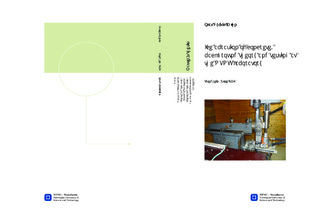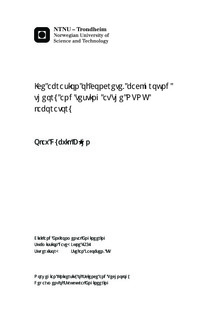| dc.contributor.advisor | Jacobsen, Stefan | nb_NO |
| dc.contributor.author | Bøhn, Olav Dybvik | nb_NO |
| dc.date.accessioned | 2014-12-19T12:01:28Z | |
| dc.date.available | 2014-12-19T12:01:28Z | |
| dc.date.created | 2012-11-08 | nb_NO |
| dc.date.issued | 2012 | nb_NO |
| dc.identifier | 566471 | nb_NO |
| dc.identifier | ntnudaim:8450 | nb_NO |
| dc.identifier.uri | http://hdl.handle.net/11250/237103 | |
| dc.description.abstract | Ice abrasion has been reviewed. Concrete and ice and their most important properties in accordance to ice abrasion have been studied. Concrete strength and contact pressure between ice and concrete is found to be important factors. Former studies of ice abrasion differ in their conclusions of which parameters they include in their ice abrasion models. The different parameters are; ice contact pressure, ice sliding speed, temperature, concrete strength, size of aggregate, total sliding distance. Different models include one or more of these parameters. Some of the previous experiments has come to different conclusions, possible reasons for these differences has been discussed.A detailed description of the NTNU Ice Abrasion Laboratory is given. The abrasion test apparatus is based on the sliding contact abrasion test principle. A concrete specimen is mounted and an ice cylinder is slid on top of the concrete with applied pressure. Pressure, speed and temperature are all fully controllable to create different test scenarios. A custom made National Instruments LabView program is used to control, monitor and log the activities in the abrasion laboratory.Ice abrasion testing has been done at the NTNU Ice Abrasion Laboratory, investigating a possible difference in abrasion rate for identical concrete with unlike initial treatment. A total of four concretes sample were tested. All four of them were saturated after this saturation period 2 of them was abrasion tested directly and 2 of them were dried, resaturated and then abrasion tested. Abrasion results were distorted by cracking of the concrete samples. No conclusive data on the abrasion rate were obtained. Two possible reasons for cracking of the concrete samples were found. The concrete samples have not been stored in best possible way before testing, which may have caused them to weaken. Secondly the ice abrasion machine has a weakness somewhere under the concrete sample. Either the concrete bedding its bearings or the load sensors yields during testing allowing the concrete to tilt up and down as the ice moves back and forth. Tilting of the concrete sample creates a bigger strain for the concrete at the turning point of ice cylinder. Measurers to remove this problem are discussed. | nb_NO |
| dc.language | eng | nb_NO |
| dc.publisher | Institutt for konstruksjonsteknikk | nb_NO |
| dc.subject | ntnudaim:8450 | no_NO |
| dc.subject | MTBYGG Bygg- og miljøteknikk | no_NO |
| dc.subject | Betongteknologi | no_NO |
| dc.title | Ice abrasion of concrete, background theory and testing at the NTNU laboratory | nb_NO |
| dc.type | Master thesis | nb_NO |
| dc.source.pagenumber | 65 | nb_NO |
| dc.contributor.department | Norges teknisk-naturvitenskapelige universitet, Fakultet for ingeniørvitenskap og teknologi, Institutt for konstruksjonsteknikk | nb_NO |

